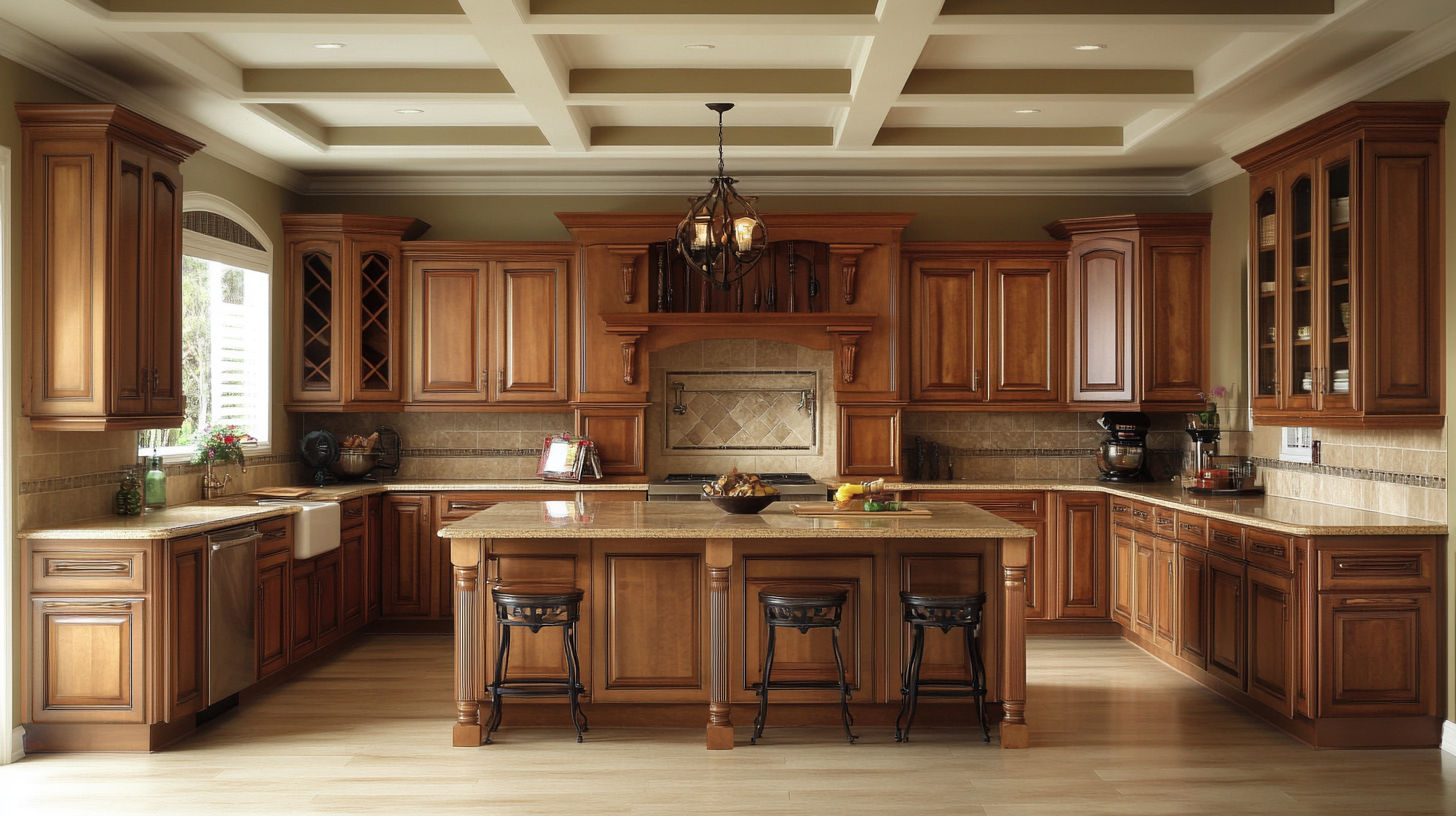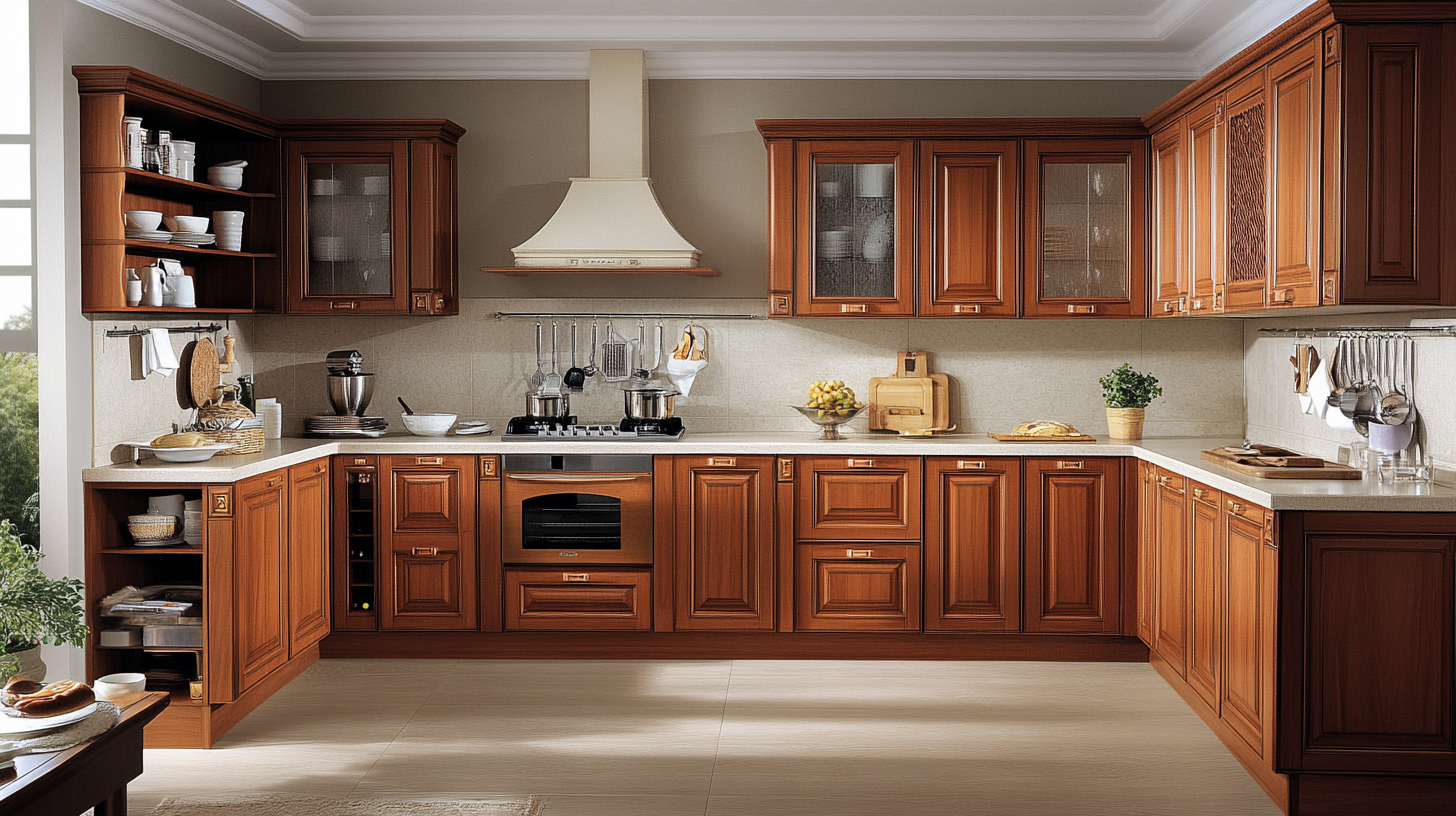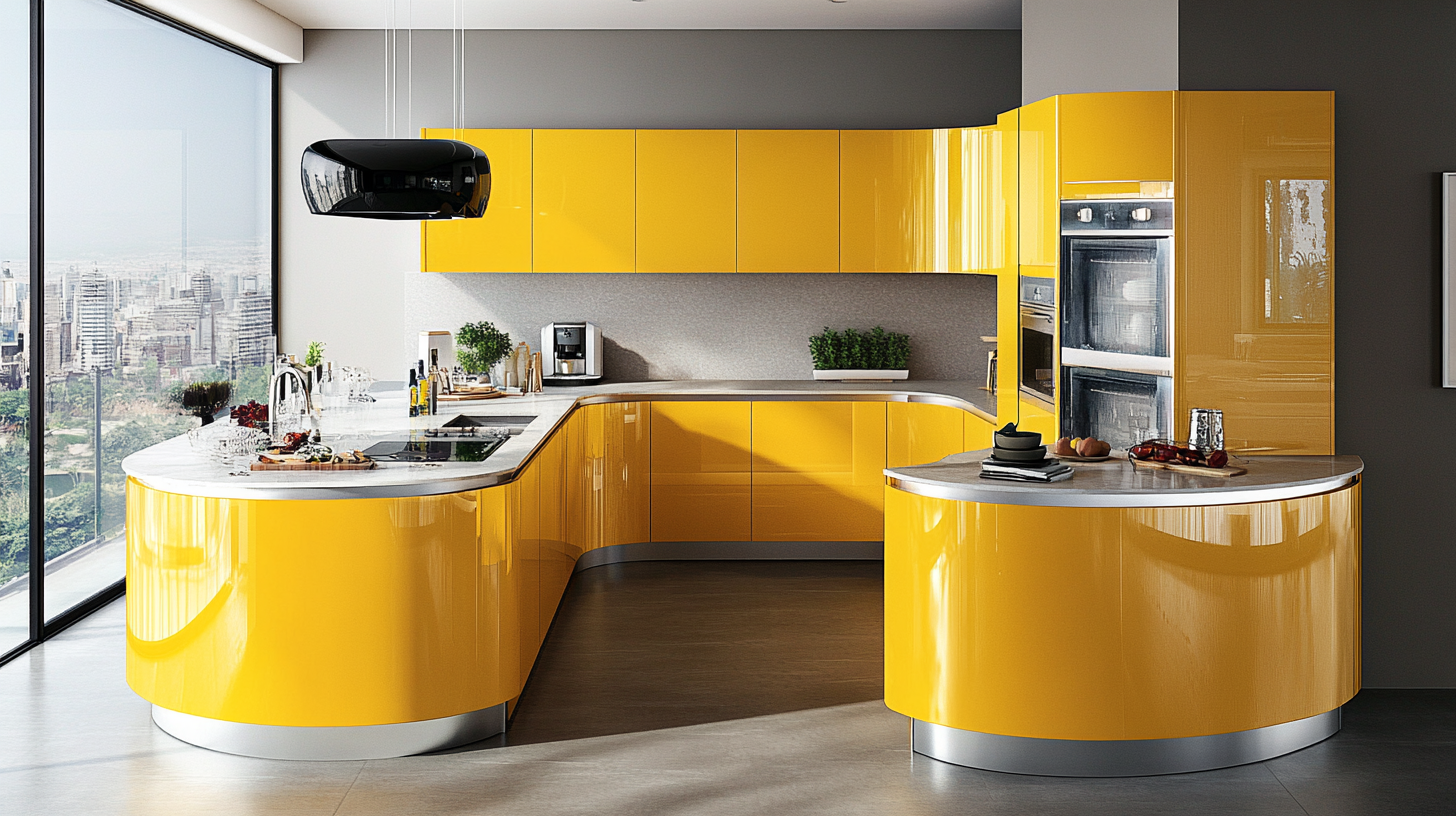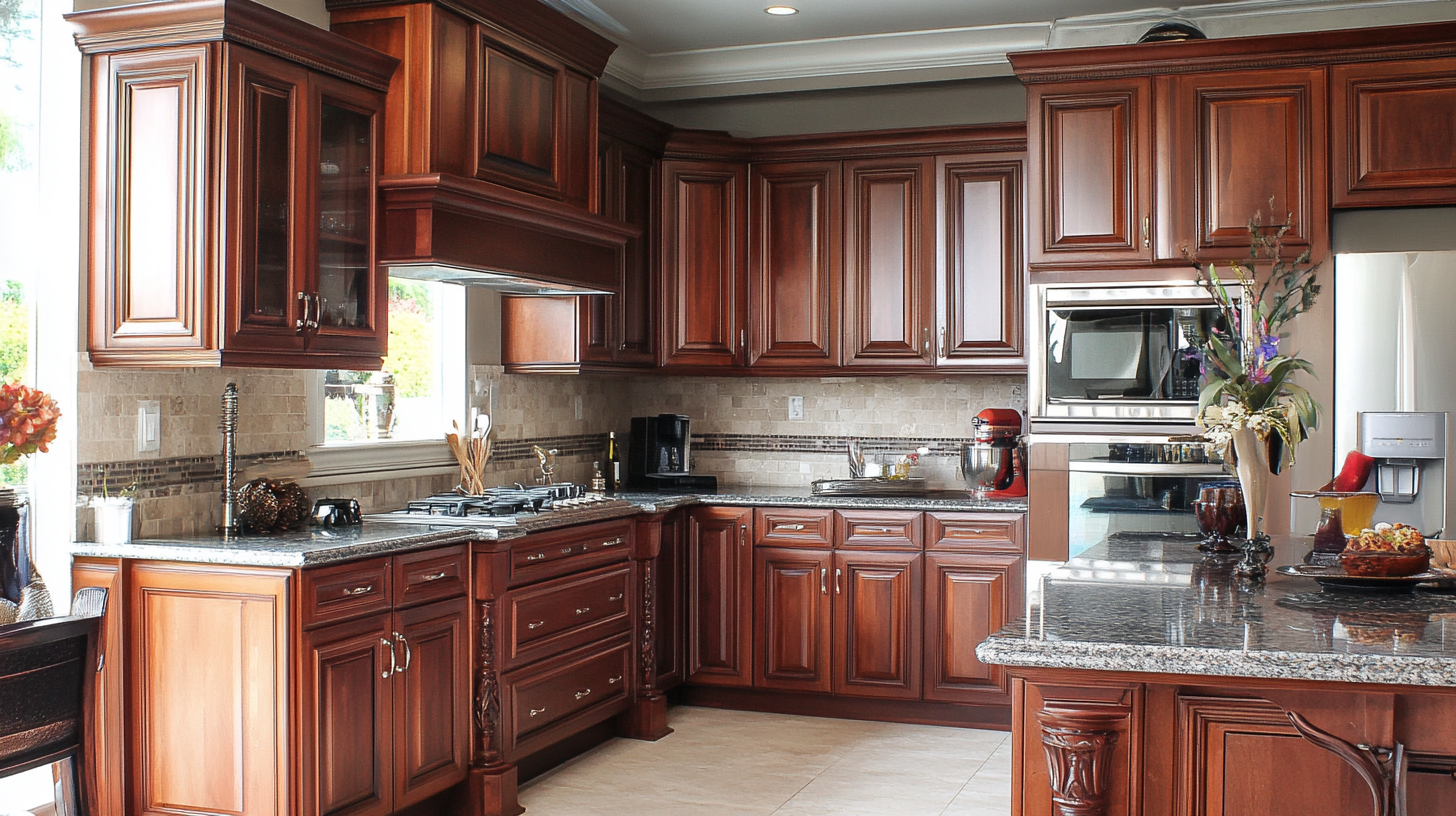Comprehensive Guide on Choosing the Perfect Home Kitchen Cabinets with Technical Specifications Analysis
When it comes to designing the perfect home, the kitchen stands as a focal point that not only showcases your culinary skills but also reflects your personal style. Home kitchen cabinets play a vital role in this equation, serving as both functional storage solutions and aesthetic enhancements. The right cabinets can elevate the ambiance of your kitchen, providing a seamless blend of practicality and design. However, with a myriad of options available—ranging from materials and finishes to styles and configurations—choosing the perfect home kitchen cabinets can quickly become overwhelming.
In this comprehensive guide, we aim to simplify the decision-making process by breaking down the essential technical specifications that contribute to the overall quality and functionality of home kitchen cabinets. We will delve into factors such as construction materials, hardware choices, and ergonomic considerations, providing you with the knowledge needed to make an informed decision. Whether you are renovating your existing space or embarking on a new kitchen design, understanding these key elements will ensure that your home kitchen cabinets not only meet your storage needs but also enhance the beauty of your culinary haven.

Factors to Consider When Selecting Home Kitchen Cabinets for Durability and Style
When selecting kitchen cabinets, it's essential to consider both durability and style to create a harmonious space. The cabinet market is diverse, with various materials such as wood, plastic, metal, and glass each offering unique benefits. Wood cabinets, for instance, are prized for their natural beauty and strength, while metal options provide a modern, industrial vibe. Plastic cabinetry can be a cost-effective solution, ensuring durability against moisture and wear, especially in a busy kitchen environment. The categorization of kitchen cabinets plays a significant role in the selection process. Stock cabinets offer a budget-friendly option with limited designs, while semi-custom cabinets allow for greater flexibility in styles and finishes. Custom cabinets, on the other hand, enable homeowners to tailor their kitchen to their specific needs, ensuring a perfect fit for both aesthetics and functionality. Trends in cabinet styles, like shaker and flat-panel designs, are also important to consider, as they can significantly impact the overall ambiance of the kitchen. Color is another crucial element when designing a kitchen space. A well-chosen cabinet color can enhance the kitchen's atmosphere, making it inviting and stylish. Current popular shades range from classic whites and soft grays to vibrant blues and greens, with each color contributing to a distinct emotional impact. By focusing on these factors—material, category, and color—homeowners can make informed choices that reflect their personal taste while ensuring the longevity of their kitchen investments.

Understanding Different Materials for Kitchen Cabinets: Wood, MDF, and Laminates
When it comes to selecting kitchen cabinets, understanding the materials is crucial. The three most common choices are wood, MDF (Medium-Density Fiberboard), and laminates, each with its unique properties and considerations.
Wood cabinets are often favored for their natural beauty and durability. However, recent news highlights concerns regarding formaldehyde levels in certain wood products, such as those from Lumber Liquidators, raising questions about safety and health risks associated with off-gassing. Consumers must be aware of the potential hazards of using solid wood cabinets sourced from dubious suppliers and should seek certified products to avoid exposure to harmful substances.
MDF cabinets provide a more budget-friendly alternative while offering a smooth finish that is ideal for painting. However, like wood, MDF can contain formaldehyde, which can pose health concerns in poorly ventilated spaces. It’s essential to consider the environmental impact of the materials used and opt for low-VOC (volatile organic compounds) products when making your selection.
Laminates are a popular choice thanks to their versatility and easy maintenance. They come in various colors and styles and are generally resistant to chipping and fading. While laminates are less likely to emit harmful chemicals compared to solid wood or MDF, consumers should still be cautious and look for options that comply with safety standards to ensure their kitchens remain a safe haven. As the market evolves, striving for transparency in material safety will be key for homeowners aiming to create healthier living environments.

Technical Specifications That Impact Cabinet Quality: Thickness, Hardware, and Finishes
When selecting kitchen cabinets, understanding the technical specifications can significantly influence the overall quality and durability of your investment. Among these specifications, cabinet thickness is a crucial factor to consider. Thicker cabinets typically offer greater strength, stability, and resistance to warping, ensuring that they endure the everyday challenges of a busy kitchen. A thickness of ¾ inch is often seen as a standard in high-quality cabinets, providing a solid structure that can support heavier countertops and withstand the wear and tear of daily use.
Another important aspect to evaluate is the hardware used in cabinetry. The quality of hinges, drawer slides, and handles can greatly affect both the functionality and longevity of cabinets. Opting for heavy-duty, metal hardware not only enhances the aesthetic appeal but also contributes to smoother operation and resilience against frequent use. Soft-close hinges and full-extension drawer slides are becoming increasingly popular for their ease of use and ability to minimize wear on cabinet components.
Lastly, the finishes applied to kitchen cabinets play a vital role in their maintenance and appearance. High-quality finishes can resist moisture, stains, and scratches, preserving the visual appeal of your cabinets over time. When choosing finishes, consider options like polyurethane or lacquer that provide a robust protective layer while allowing for a variety of aesthetics—from sleek modern looks to rustic charm. Understanding these technical specifications will empower homeowners to make informed choices, ultimately leading to a kitchen that is not only beautiful but also functional and long-lasting.

Analyzing Cabinet Dimensions and Layout for Optimal Kitchen Functionality
When it comes to designing a functional kitchen, analyzing cabinet dimensions and layout is crucial. Proper cabinet sizing not only affects the aesthetic appeal of your kitchen but also plays a significant role in its overall functionality. Start by measuring your kitchen space thoroughly. Consider the height, width, and depth of your cabinets, ensuring they align with your kitchen's dimensions. Standard upper cabinets are typically 30 to 42 inches high, while base cabinets usually sit at 34-1/2 inches. These dimensions create a harmonious flow and make the best use of vertical space.
In addition to size, the layout of your cabinets should promote efficiency in the kitchen. The classic work triangle—a design principle that suggests placing the sink, stove, and refrigerator in a triangular formation—can vastly enhance your cooking experience. Ensure that there's adequate space between each element, typically between 4 to 9 feet, allowing for comfortable movement while preparing meals. Customizing cabinet configurations—by incorporating pull-out shelves, lazy Susans, and deep drawers—can further optimize storage and access to your kitchen essentials.
Lastly, don’t underestimate the importance of cabinet door styles and hardware in complementing your functional layout. Choosing the right finish and material can influence the overall usability. For instance, soft-close hinges and drawers can eliminate the risk of slamming, while open shelving might work for those who prefer easy access to frequently used items. Thoughtful planning of both dimensions and layout transforms your kitchen into an organized, efficient space tailored to your cooking habits and lifestyle.
Trends in Kitchen Cabinet Design: Balancing Aesthetics and Practicality in Modern Homes
In modern homes, the kitchen has transformed into a central hub that beautifully marries aesthetics with functionality. This balance is essential when considering kitchen cabinet design, as the right choice can significantly enhance both the visual appeal and practicality of the space. Recent trends emphasize a shift towards minimalistic designs, utilizing materials such as wood, metal, and glass not only for their durability but also for their style. Customizable options in cabinetry allow homeowners to cater to their specific needs, from maximizing storage to incorporating smart technology that aligns with contemporary living.
Moreover, innovative technologies are reshaping our understanding of kitchen functionality. The introduction of advanced preservation methods enhances the freshness of ingredients, encouraging healthier cooking and dining experiences. As showcased at industry events, the integration of technology into kitchen design is becoming more commonplace, with features that streamline tasks and reduce common kitchen challenges, such as smoke and odor control. Homeowners are now more inclined to invest in solutions that offer both sophistication and practicality, resulting in cabinets that not only store but also enhance the culinary experience.
Emphasizing eco-friendly materials and sustainable practices is also a growing trend worth noting. As consumers become more sustainability-conscious, the demand for cabinets that not only look good but are also environmentally responsible has increased. This aligns perfectly with the contemporary focus on creating spaces that are not only functional but also reflective of personal values, blending elegance with ethical considerations in kitchen design.


Fall into Function: How LaFata Cabinets Prepares Your Kitchen for the Cozy Season


Back-to-School Kitchen Refresh: How LaFata Cabinets Can Help You Stay Organized This Fall


